Ibis are venturing into the eMTB sector with the all-new Oso. The bike offers exciting features and a futuristic look, but can it deliver on the trail? We visited the Californian brand for an exclusive presentation and a first ride review, putting the new 2023 Ibis Oso eMTB to the test on Santa Cruz’s finest trails.

24.10 kg (size L) | € 12,498 | Manufacturer’s website
Northern California is considered the birthplace of modern mountain biking and is still home to many cult MTB brands, including Ibis. Founded in 1981 by Scot Nicol, Ibis have a rich history, and with the Ripmo, the brand have released one of the most versatile trail bikes currently on the market, as our sister magazine ENDURO found out in numerous reviews. The standout feature of the Ibis Ripmo was and still is the analogue bike’s excellent balance between up and downhill performance. Although the new Ibis Oso looks completely different, it’s designed to build on the outstanding handling characteristics of the Ripmo.
With 170 mm travel up front and 155 mm at the rear, the Oso has about 10 mm more travel than its analogue counterpart. Visually, with its beefy and organic design language, it doesn’t just look unique, but also very capable and ready to take on the roughest terrain. Nevertheless, it promises to cover a wide range of use cases and even cut a fine figure as a commuter. The Oso is powered by the Bosch Performance Line CX Smart System motor with a 750 Wh battery, both of which are integrated into a carbon frame, as you’d expect from Ibis. The complete eMTB weighs 24.10 kg in size L. For their eMTB debut, Ibis are asking € 12,498 – there’s just the one option for now.
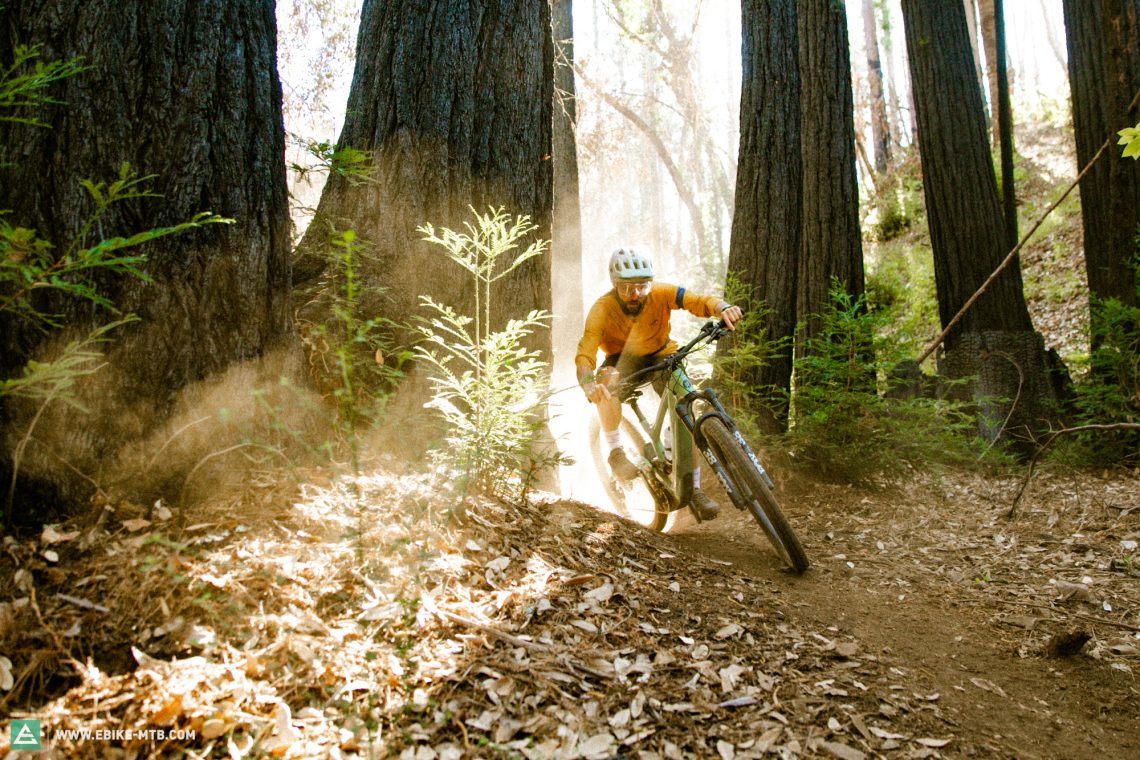
The right time to crash the eMTB party
You could say only the coolest guests arrive fashionably late to the party. That certainly is the case with Ibis. But not because they were late to start with development, but because they weren’t satisfied with the initial designs. The team started with the development as far back as 2017, but then scrapped the project and started over. Why? In the words of Ibis CEO Hans Heims: “It wasn’t inspiring!” They didn’t want to build just another bike with a motor on it. To get an idea of Ibis’ aspirations, just look at the original Mojo, the Californian brand’s first carbon bike, which, at the time, was something of a functional work of art. And that’s exactly what Ibis’ first eMTB sets out to be: coherent, radical, and special, resulting in an organically shaped spaceship aboard which you can fly through the woods, with the assistance of an electric motor.

2023 Ibis Cycles – A new logo and a new understanding of (e-)mountain bikes
According to Ibis, mountain bike development used to be all about making bikes lighter and stiffer. The introduction of eMTBs has changed that. Now, durability and performance always take priority. Modern eMTBs don’t just have to perform in technical terrain and cope with everything you throw at them. They also open up a range of new use cases, so they’ve got to be versatile. To design an eMTB, Ibis first wanted to understand eMTBing as a new, independent sport. The claim of the new Oso is: “Downhill both ways”. In other words, the uphill performance shouldn’t be inferior to the downhill performance in any way. At the same time, they wanted the eMTB to fare well as a commuter, too.


The Oso heralds a new era at Ibis, which is reflected in the branding, speaking a new, clearer language. We must admit, we always loved the oval Ibis badge adorning all their bike’s head tubes to date, though we never recognised the bird of the same name that it was supposed to symbolise! Shame on us 😉 With the new logo, Ibis are introducing a clearer, more contemporary language. Finally, we can recognise the bird! The lettering is bigger, bolder, more confident – instead of lowercase, cursive letters, the brand name is now in bold type and uppercase. We love it! However, the new logo, as well as the fact that Ibis now have a (long overdue) eMTB in their portfolio, will take some getting used to, most of all from die-hard Ibis fans.
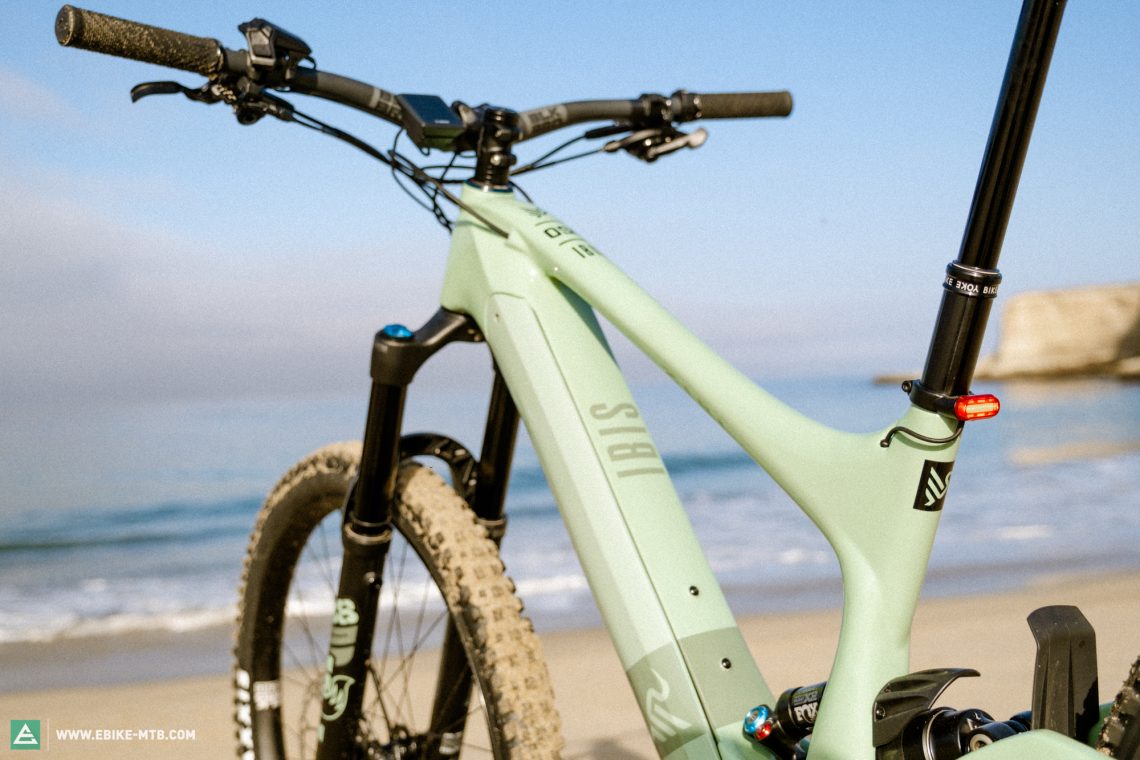
If you’re wondering what Oso stands for, it’s the Spanish word for bear. On the one hand, there’s a bear on California’s coat of arms, thus referencing Ibis’ heritage, and on the other, the name is probably owed to the bear-like strength that the new eMTB is supposed to embody.
The design of the new, 2023 Ibis Oso – A spaceship or a work of art?
The Ibis team have not taken the design process of their eMTB debut lightly. The first design concept, a classic mtb with an integrated motor, was a little uninspiring – so they scrapped it and went back to the drawing board.. First of all, they defined the eMTB’s non-negotiable features, which then represented the design limits. These included the motor, a dropper seat post, capable suspension, 29″ wheels and space for the mandatory water bottle.
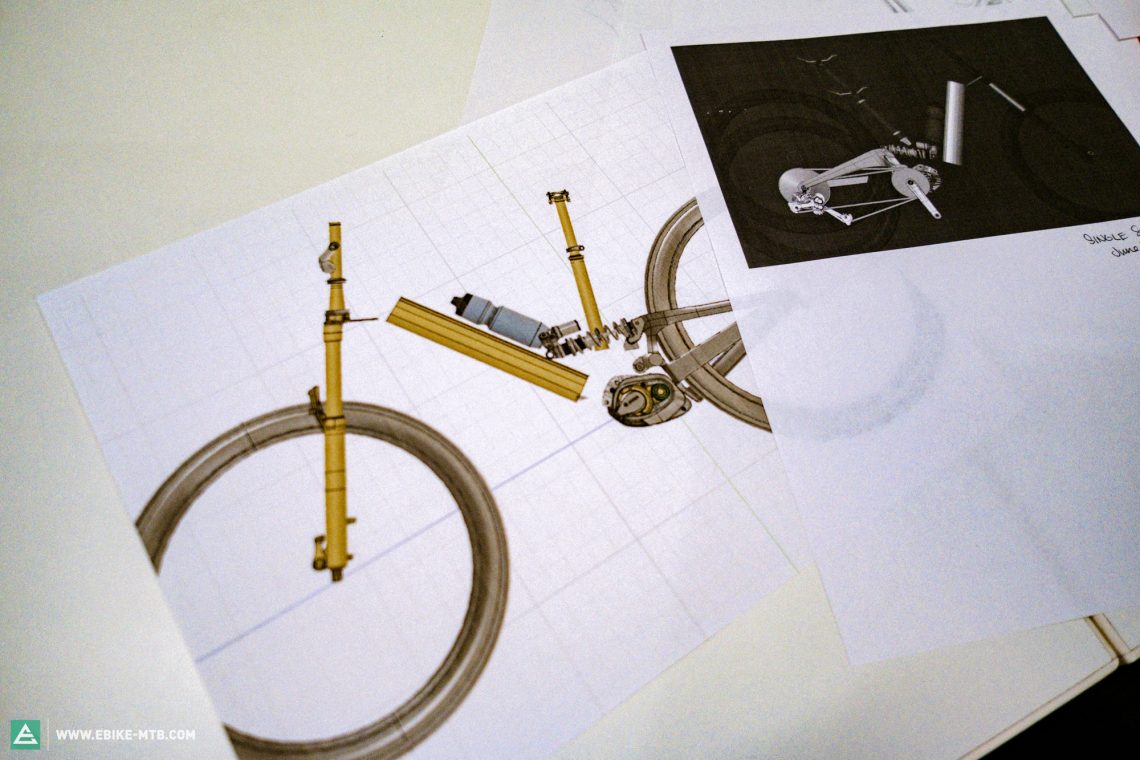
As can be seen in the graphic above, the components are extremely close together: the shock nearly touches the battery; the motor clears the rear tire by just a few centimetres. To achieve this extremely compact design, Ibis’ developers came up with a lot of tricks and clever solutions. They rotated the Bosch motor slightly and made the battery mounting hardware as compact as possible. The Fox shock relies on the compact Trunnion standard and is mounted extremely close to the battery. The striking rear linkage isn’t just a defining design feature, but also a technical solution to keep the chainstays as short as they are (444 mm in size L/XL). The asymmetrical seat tube certainly is an eye-catcher, too, though its design was largely determined by the position of the seat post.
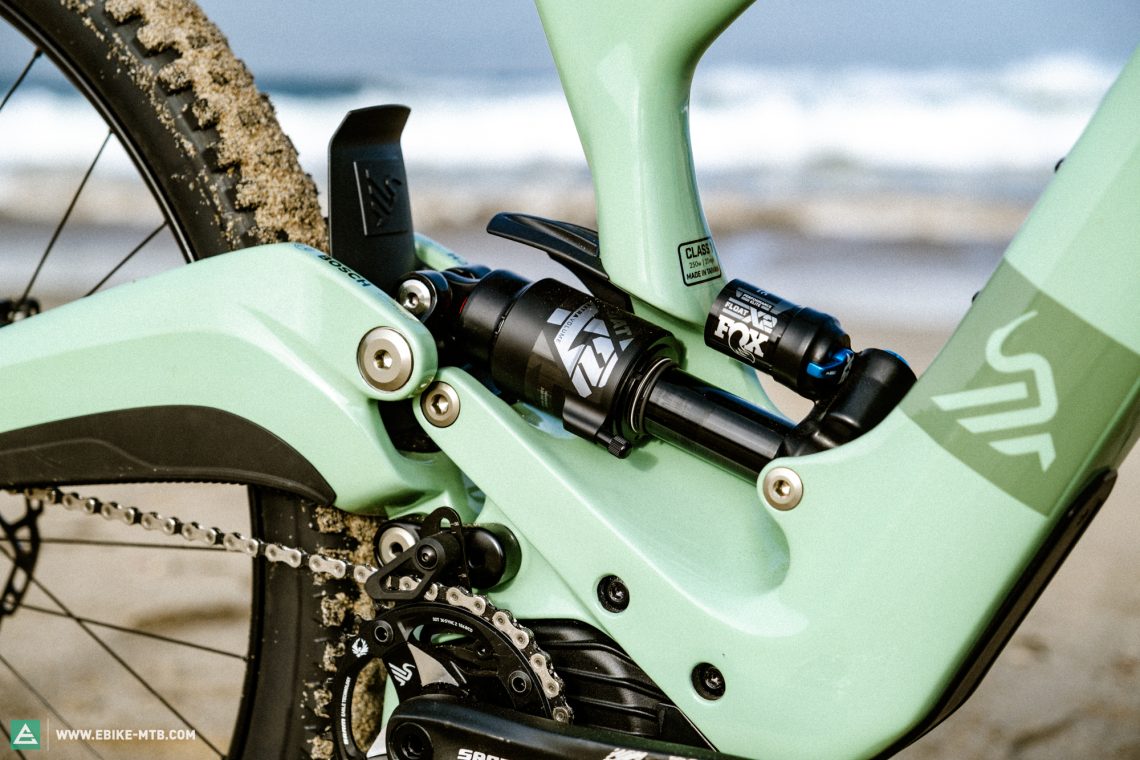
The area below the shock is angled so that it doesn’t collect dirt while you ride, and water can simply drain off. You’ll also find two small mudguards above and behind the shock, protecting the shock and rear end from getting bombarded with dirt. The rear end and shock hold yet another secret: the Dave Weagle rear suspension kinematics have been adapted and matched to a FOX float X2 shock without a volume spacer. As a result, the rear end should work equally well with a coil shock. According to Ibis, you could also increase the rear travel by 15 mm (from 155 mm to 170 mm) by fitting a shock with a 5 mm longer stroke. The frame itself is approved by Ibis for the use of dual crown forks with up to 190 mm travel. Moreover, the Californian brand are so convinced of the durability of their latest bike that they offer a 7-year warranty on the frame and a lifetime spare parts warranty on the bushings. The motor comes with a 2-year warranty, which gets handled by Bosch’s own service network.
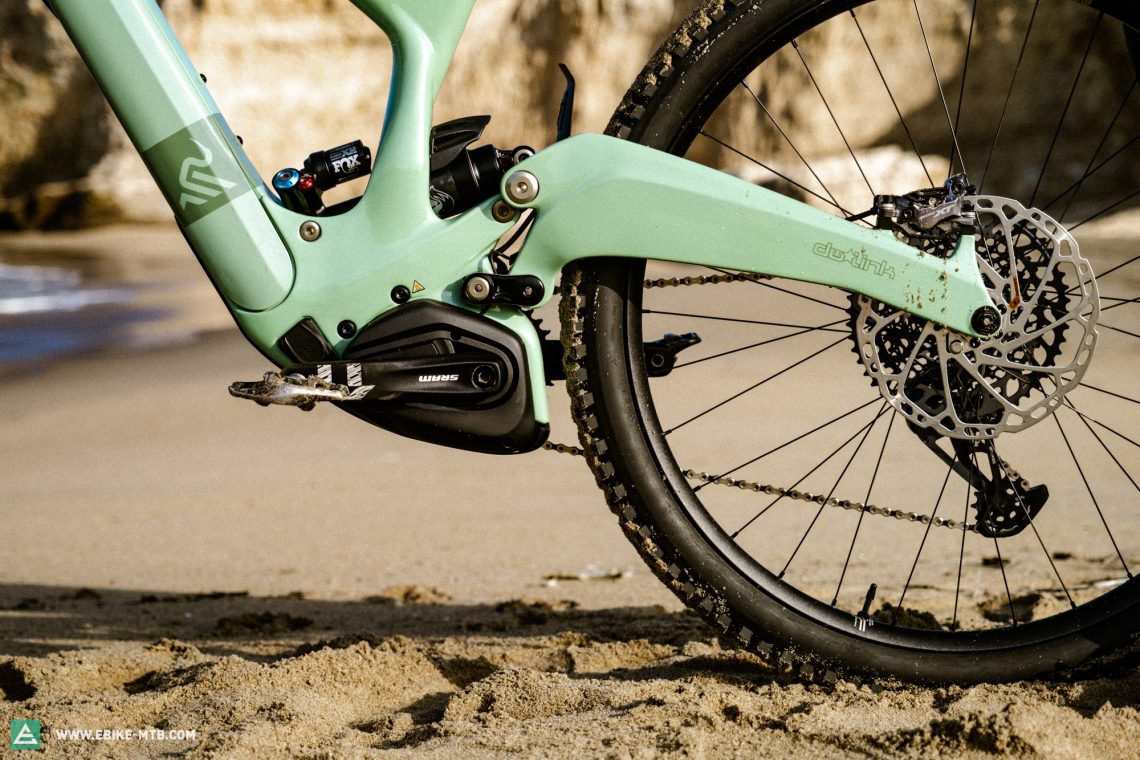
The integration of the Bosch Performance Line CX Smart System on the 2023 Ibis Oso in detail
For the Oso, Ibis have chosen to rely on the powerful Performance Line CX Smart System motor from Bosch. The 750 Wh battery can be removed from the side of the down tube for easy charging. In an early design phase, Ibis had the battery with its rectangular cross-section installed on edge in the down tube. However, the down tube would have looked out of proportion and the idea was quickly discarded in favour of a horizontal battery.
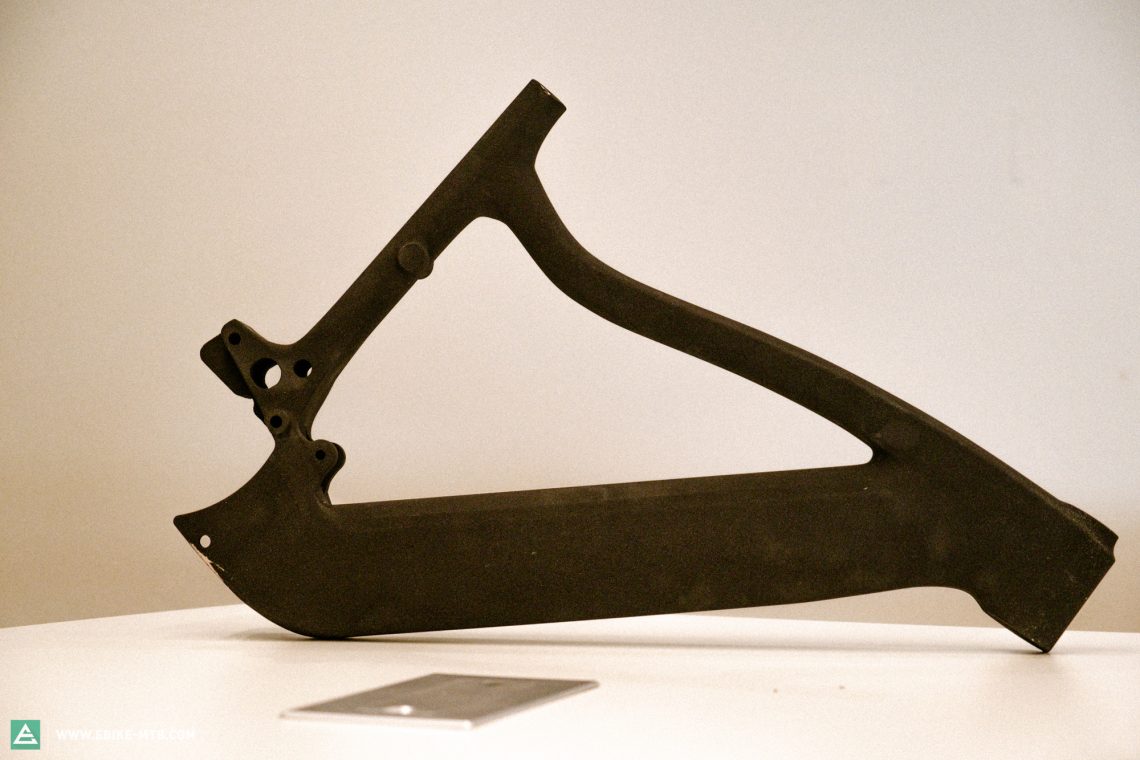
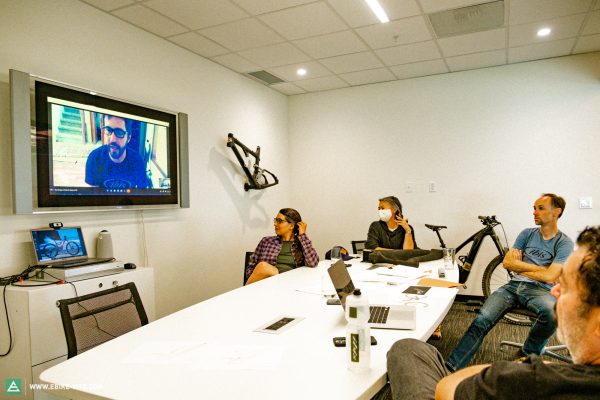

Thanks to specially developed battery mounts, the battery is easy to remove, and the down tube still looks quite slender considering the size of the battery. The underside of the down tube features a convenient shuttle guard to protect the frame when transporting the bike on the back of a pickup truck. The plastic skid plate under the motor broke during our test ride when we knocked into a ledge – there seems to be room for improvement here in terms of durability. In our view, the position of the charging port on the side of the down tube isn’t ideal either. Although Ibis designed their own splash guard for it, it’s bound to get caught in the crossfire of mud and water during long rides in wet conditions. The cover might not be enough, especially if you live in a place like Scotland where even the summers are wet.
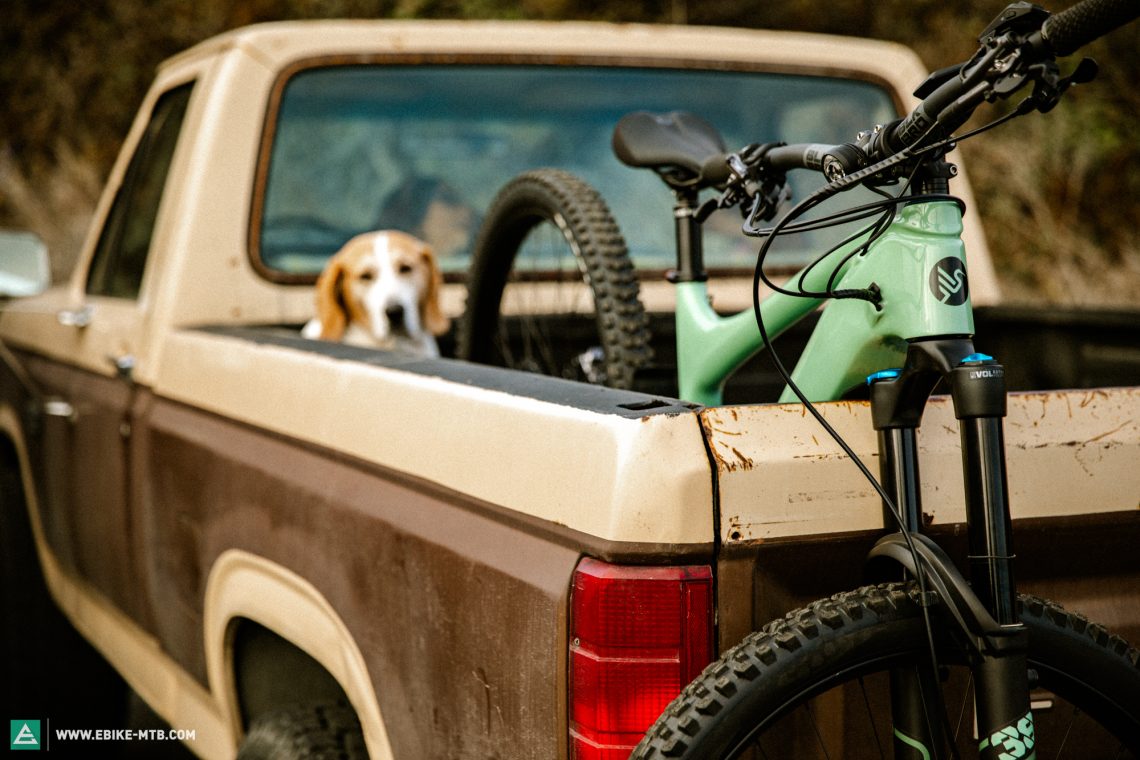
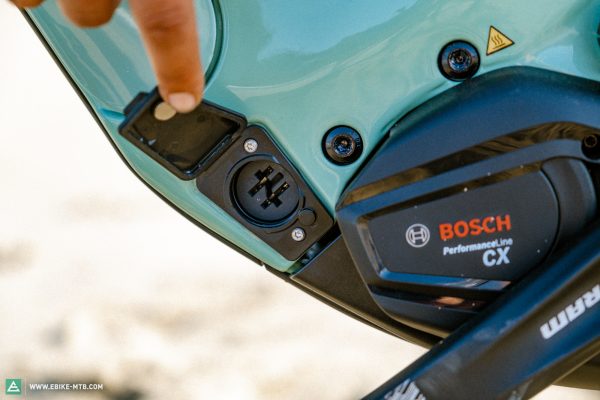
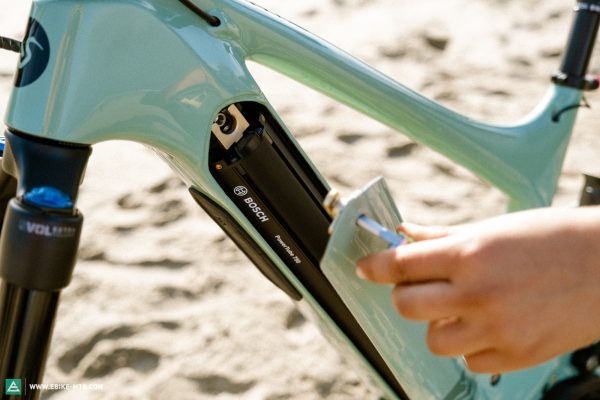
The Ibis Oso comes with a practical Lupine SL F headlight as standard, including an 900-lumen high-beam function and a neatly integrated Lupine C14 tail light in the seat post clamp. While the cable routing worked out well in the back, it must have caused the Ibis team a bit of a headache up front. It was one of our criticisms of the Ripmo, too. With the Oso, however, there are even more cables surrounding the cockpit due to the motor. All those cables and their untidy integration with the cockpit aren’t on par with the bike’s otherwise high design standards. The rubber plugs for the cable ports don’t stay put either and don’t reflect the Oso’s other high-quality details.
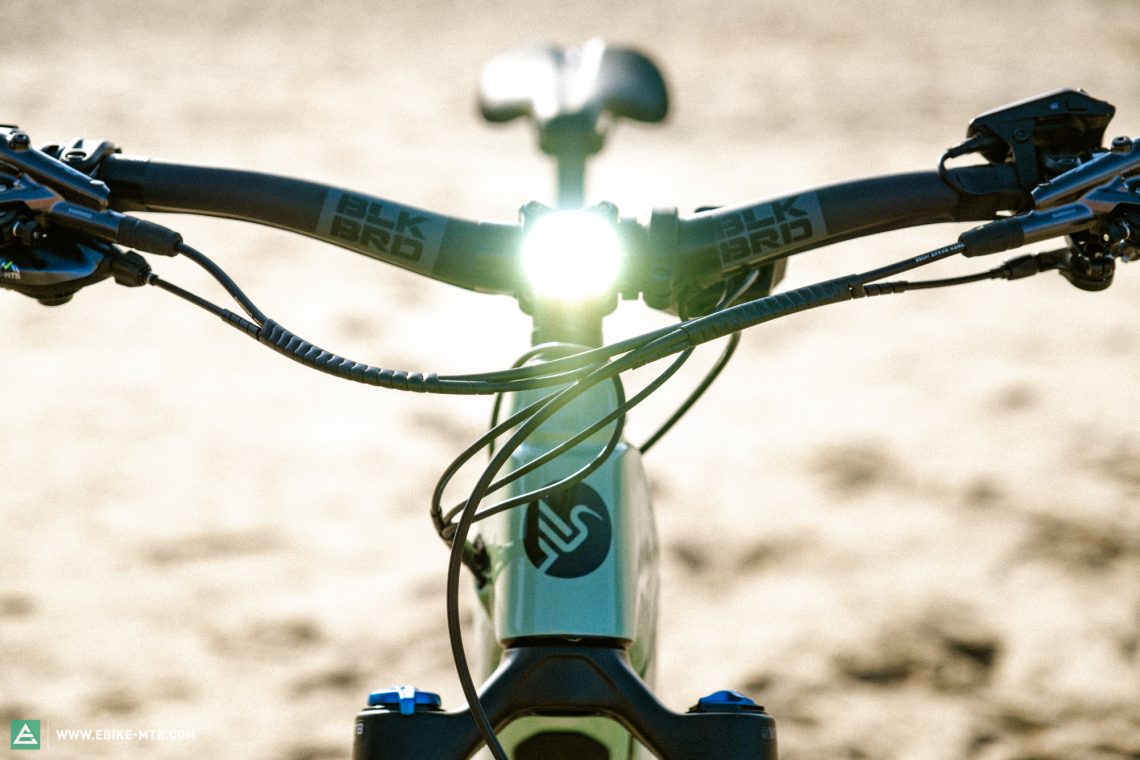
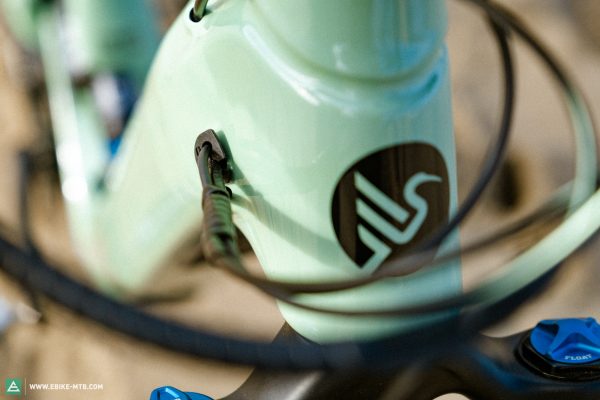
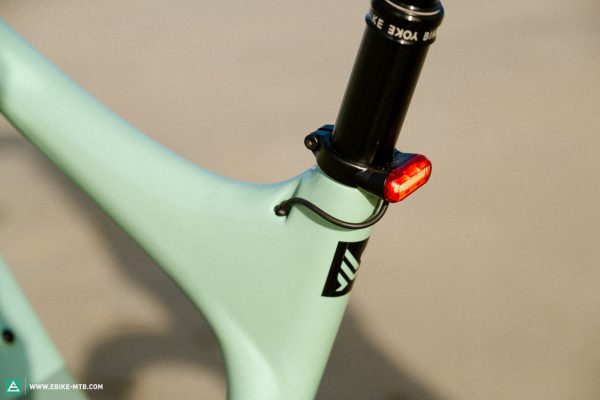
If you want to reduce the chaos, you can opt against the Bosch Kiox 300 display and rely solely on the LED remote instead. You can also get access to detailed ride data via the eBike Flow app by pairing your smartphone with the LED remote. Unfortunately, Ibis’ debut eMTB doesn’t cater to the new Bosch System Controller, which you could pair with the new Bosch Mini Remote to further declutter the cockpit. The UNNO BOÖS proves that it’s possible to route the cables neatly through the headset without driving your bike mechanic around the bend or kinking the cables.
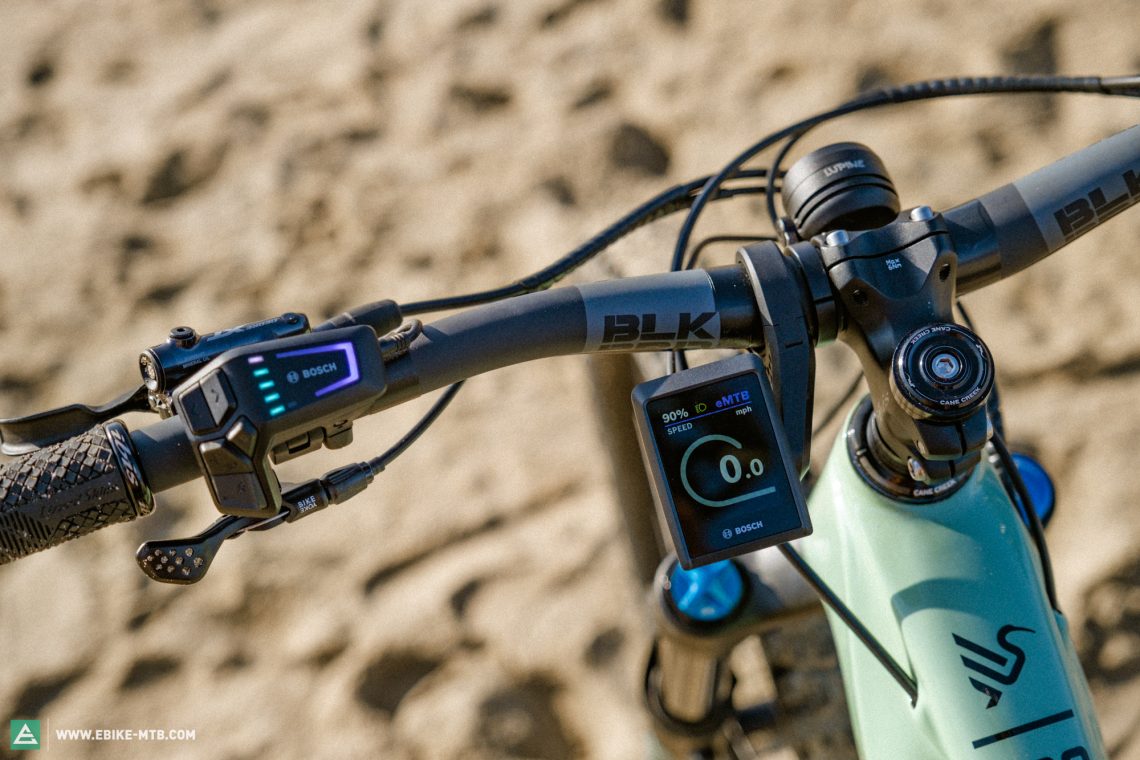
Free choice of sizes for the 2023 Ibis Oso – Geometry, sizes, and fitting
Spoiler alert: we were surprised at how balanced the new Ibis Oso feels right off the bat. This is largely due to the size-specific design. Often, brands design just one frame size, which they carry over to the other sizes. Moreover, it’s typically only the front triangle that grows with each size while the rear end remains unchanged in an effort to reduce production costs, which is standard practice in the industry. This leads to compromises in balance and weight distribution, especially at the extreme ends, i.e. the largest and smallest frames. At Ibis, designer Roxy and President Tom have a vested interest in making sure that both the S and XL frames handle equally well on the trail.
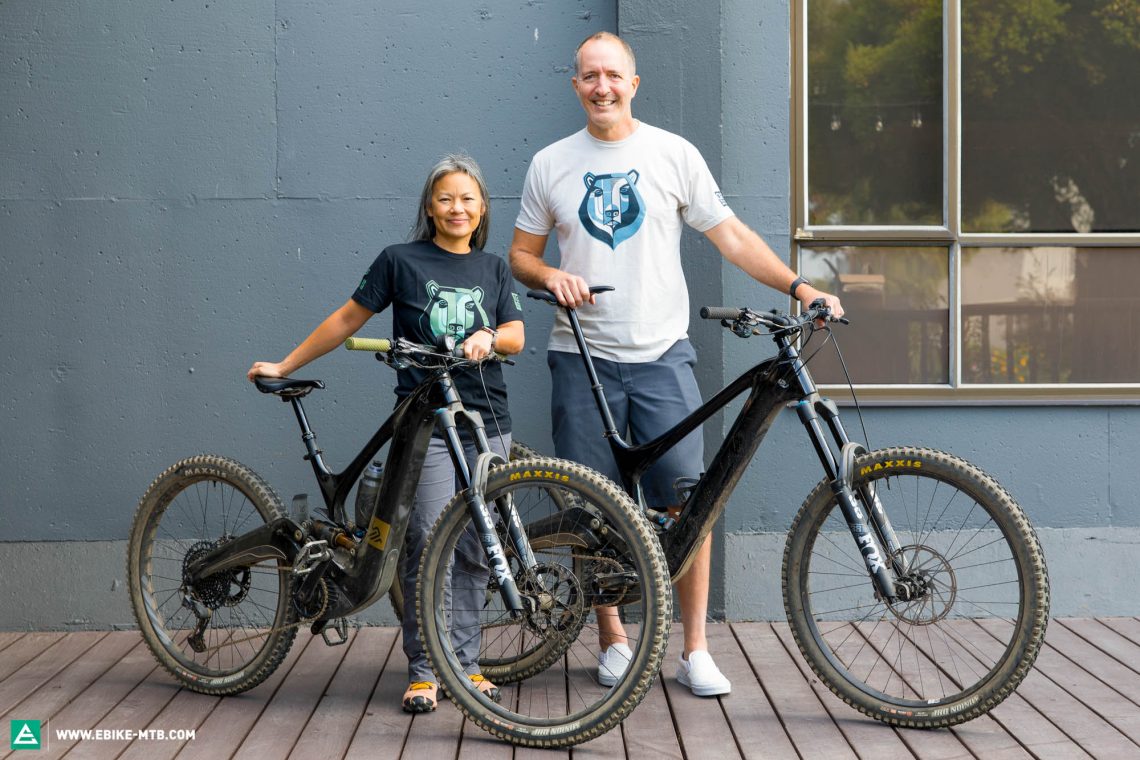
Like many eMTBs, the Oso is available in sizes S to XL. However, Ibis have gone the extra mile by designing two size-specific rear ends. For the frame sizes S and M, the chainstay length is 439 mm, whereas sizes L and XL come with 444 mm chainstays, which should position the rider and thus also their centre of gravity more centrally on the bike regardless of size. For the same reason, the seat tube angle steepens with the sizes, going from 77° to 79°. Ibis also address the size-specific requirements regarding wheel size, delivering the Oso in a mullet configuration with a 27.5″ wheel on the rear in sizes S and M. From size L, the Ibis Oso rolls on 29″ wheels both front and rear. On the size S, you’ll be able to fit a 650 ml (22 oz) water bottle with a side load cage; from size M, the front triangle can happily accommodate a 750 ml (26 oz) bottle.
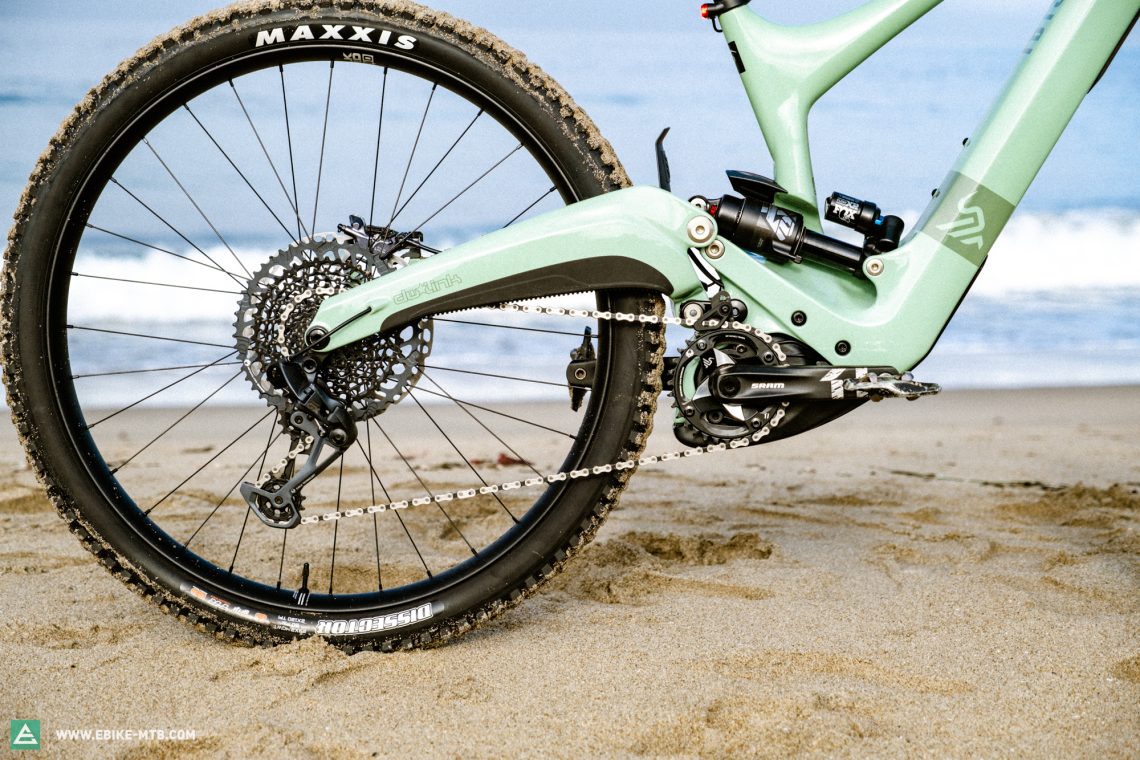
Another special feature of Oso’s sizing is that the size S comes with a smaller 625 Wh battery, which we think is a great idea and wonder why this isn’t something more brands do. Smaller riders usually weigh less and consume less battery power. At the end of a long ride, taller, heavier riders usually have significantly less range left compared to smaller, lighter riders. In the worst-case scenario, a large battery only makes small riders haul more weight, and the downtube must be long enough to accommodate the large battery, putting shorter riders in a stretched-out position.
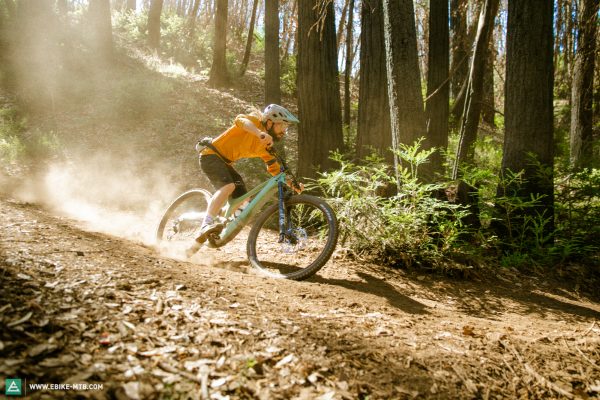
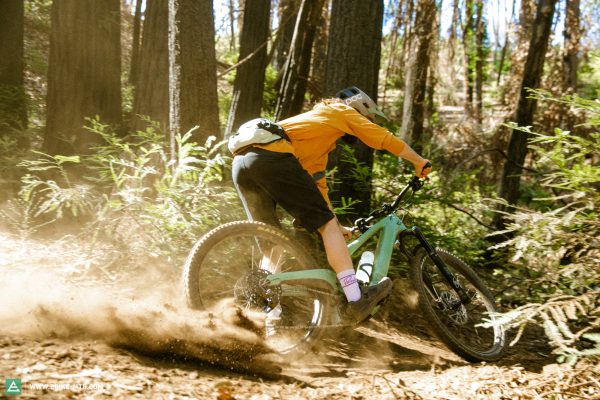
But how do you go about choosing the right size for you? If you’re familiar with the Ibis Ripmo and know what size you prefer it in, you can transfer that to the Oso. Robin is 178 cm tall and prefers size L on the Ripmo, which is why he also rode the Oso in size L. As with the Ripmo, however, you can choose the size based on your preferred reach: even in size XL, the seat tube remains short at 427 mm and is paired with a long-travel dropper (185 mm in L and 213 mm in XL). Thanks to the short seat tube, shorter riders aren’t restricted in their freedom of movement, allowing them to upsize if desired. So, if you prefer a longer, more stable bike, you can simply order the Ibis Oso in a bigger frame size than usual.
| Size | S | M | L | XL |
|---|---|---|---|---|
| Top tube | 573 mm | 607 mm | 638 mm | 669 mm |
| Seat tube | 394 mm | 414 mm | 414 mm | 427 mm |
| Head tube | 90 mm | 106 mm | 122 mm | 139 mm |
| Head angle | 64° | 64° | 64° | 64° |
| Seat angle | 77° | 77° | 78° | 79° |
| Chainstay | 439 mm | 439 mm | 444 mm | 444 mm |
| BB Drop | 31/14 mm | 31/14 mm | 31 mm | 31 mm |
| Wheelbase | 1,206 mm | 1,242 mm | 1,294 mm | 1,341 mm |
| Reach | 430 mm | 460 mm | 500 mm | 540 mm |
| Stack | 621 mm | 635 mm | 650 mm | 665 mm |
The components of the 2023 Ibis Oso in detail
For the time being, there will be only one version of the 2023 Ibis Oso, available in a choice of two colours: mint green and dark blue. The € 12,498 Oso features a FOX 38 Performance fork with a minimally adjustable FIT Grip damper. The FOX FLOAT X2 shock is from the Performance Elite range and features separate high-speed and low speed rebound adjustment. Paired with 220 mm rotors front and rear, the Shimano XT four-piston brakes provide ample stopping power no matter how long the descents. A SRAM GX Eagle 12-speed drivetrain takes care of the gears.
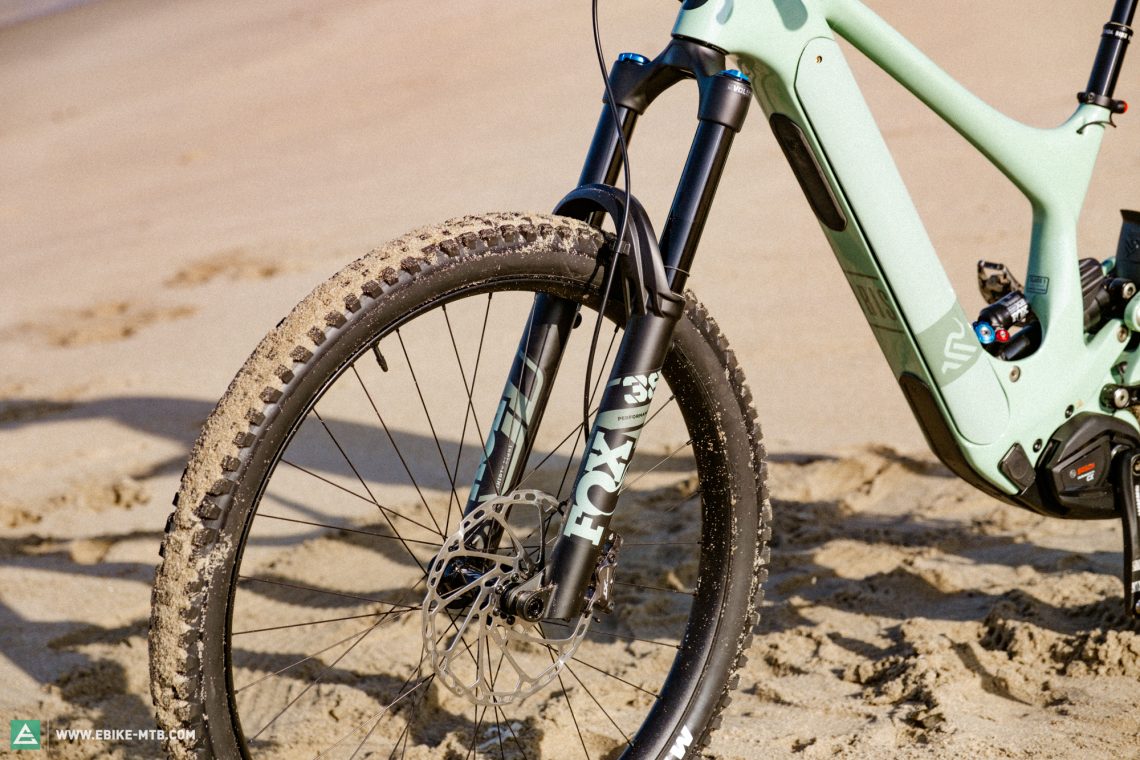
The ninja star inspired design of the in-house Ibis chainring spider doesn’t just look cool, but also provides the required 55 mm chain line. For the wheels and tires, Ibis put durability before weight, speccing a MAXXIS ASSEGAI up front and a DISSECTOR on the rear, both featuring the robust Doubledown casing and fitted to the specially developed Blackbird Send alloy wheels. They’ve been specially shaped and reinforced – more so on the rear than the front – to make the tires and rims less susceptible to damage while keeping the tubeless setup airtight.
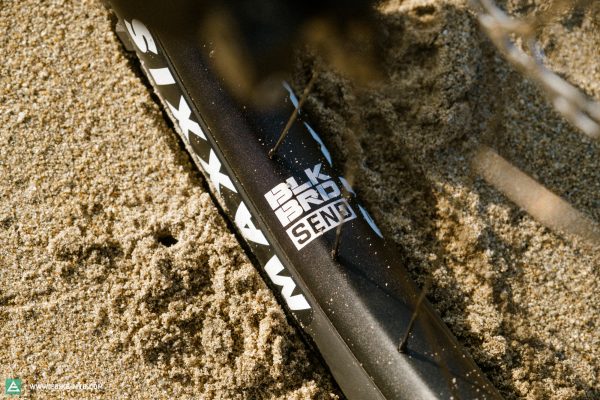


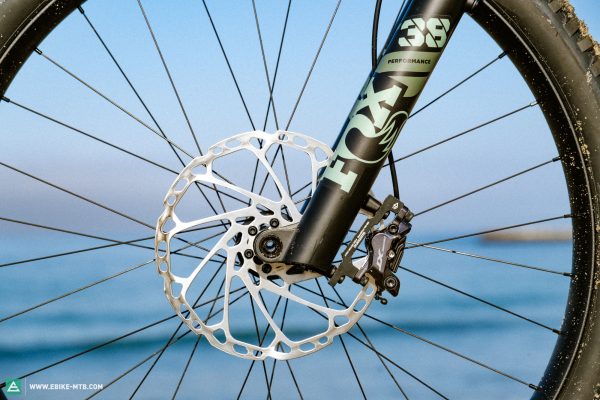
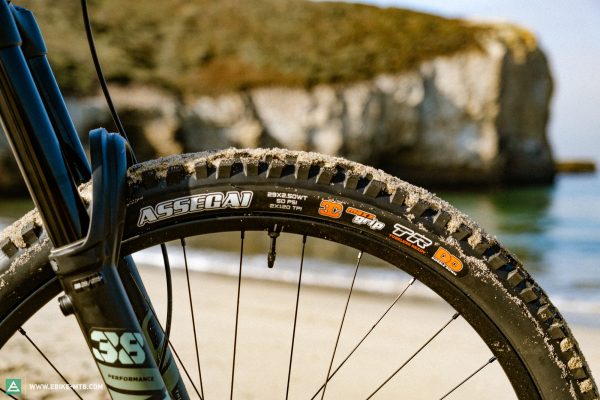
IBIS Oso 2023
€ 13,000
Specifications
Motor Bosch Performance Line CX 85 Nm
Battery Bosch PowerTube 750 Wh
Display Kiox 300
Fork FOX 38 Performance 170 mm
Rear Shock FOX FLOAT X2 Performance Elite 155 mm
Seatpost Bike Yoke Revive 125 – 213 mm
Brakes Shimano XT M8120 220/220 mm
Drivetrain SRAM GX 1x12
Stem IBIS 40 – 50 mm
Handlebar IBIS Carbon 800 mm
Wheelset Blackbird Send 29" (29"/27" in S,M)
Tires MAXXIS ASSEGAI/DISSECTOR Doubledown 2.5"
Technical Data
Size S M L XL
Weight 24.1 kg
Perm. total weight 150 kg
Max. payload (rider/equipment) 125 kg
Trailer approval no
Kickstand mount no
Specific Features
integrated Lupine lights
First ride review of the 2023 Ibis Oso
Just standing there, the futuristic look of the new Ibis Oso makes you want to hit the trails! So, instead of just staring at it all day or losing ourselves in virtual worlds, we put the new Ibis Oso to the test on the dusty and demanding trails around Santa Cruz, California. As with the Ibis Ripmo – one of last year’s best trail bikes according to our sister magazine ENDURO – the Ibis Oso is plug and play, immediately making you feel at home. On the climbs, the Ibis becomes an Ibex, an alpine mountain goat. The front end stays securely planted on the ground even on steep climbs and the Oso generates plenty of traction. However, our test bike was specced with longer pre-production cranks, which tended to get caught on obstacles.

Coming down, the Oso transforms back from a goat to a bird, encouraging you to get airborne at every opportunity and manoeuvring easily through the air.. When things get tight, it flits back and forth like a hummingbird, making easy work of spontaneous course corrections. As you pick up speed, the Oso proves that it isn’t just agile, but stable, too. On high-speed sections, the suspension really comes into its own, allowing the Oso to eat braking bumps without batting an eyelid.
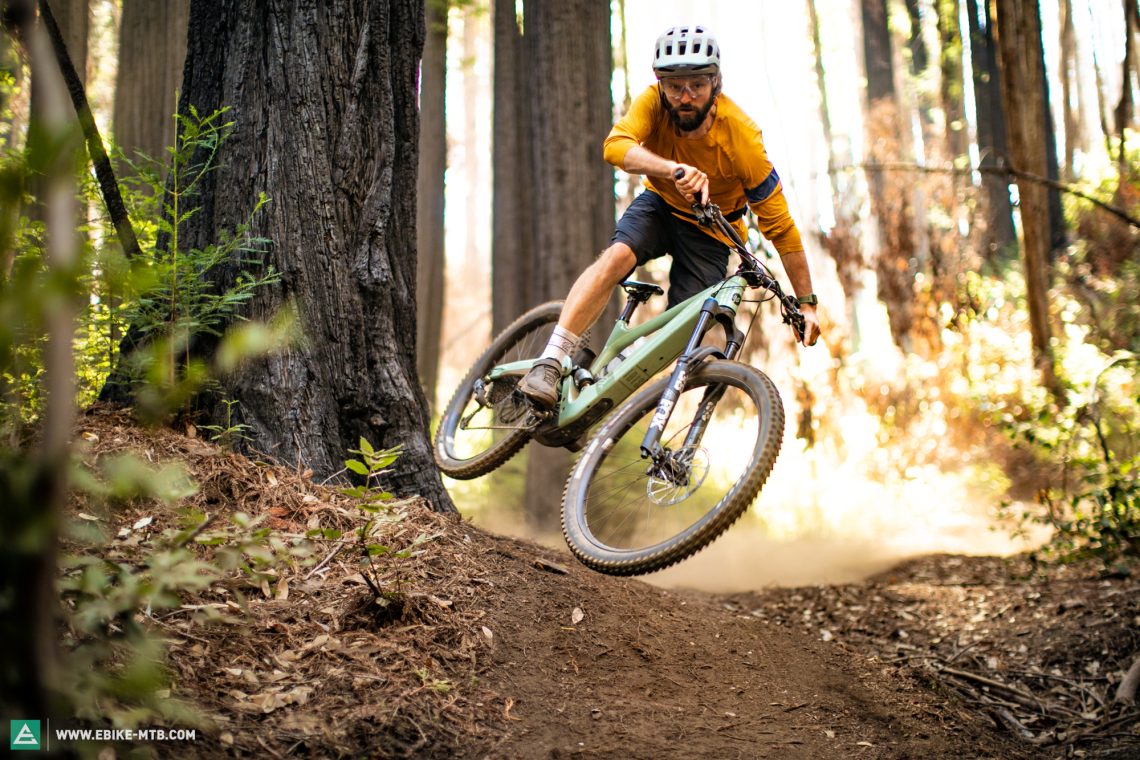
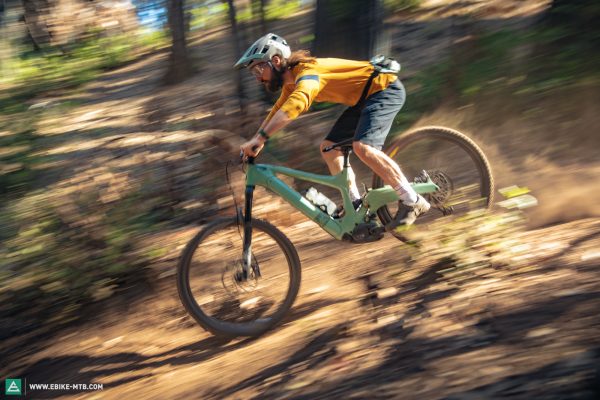

Our conclusion on the 2023 Ibis Oso
This is what a modern eMTB looks like! The Californian brand’s debut isn’t perfect, but it’s brilliant, nonetheless. The Ibis Oso combines exceptional design and great versatility with excellent, intuitive handling. It’s equally suitable for beginners and pros who love going downhill both ways. And thanks to the integrated lights, it makes a great commuter, too! If only it weren’t for the untidy cable routing around the cockpit which spoils the otherwise futuristic, organic design language.
Tops
- equally good on the climbs and descents
- unique, futuristic, organic design language
- integrated lights
- sturdy rims combined with robust tires
Flops
- cable routing around the cockpit
- skid plate durability
For more information, visit ibiscycles.com
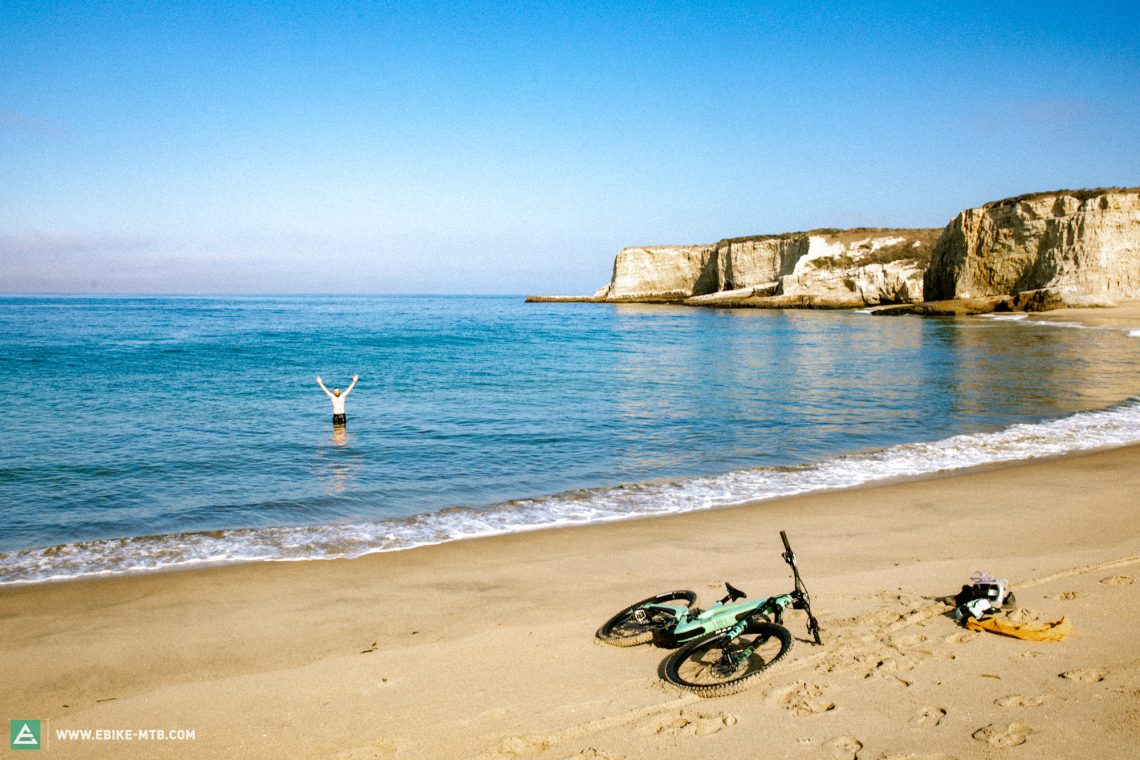
Did you enjoy this article? If so, we would be stoked if you decide to support us with a monthly contribution. By becoming a supporter of E-MOUNTAINBIKE, you will help secure a sustainable future for high-quality cycling journalism. Click here to learn more.
Words: Rudolf Fischer, Robin Schmitt Photos: Saris Mercanti, Robin Schmitt









